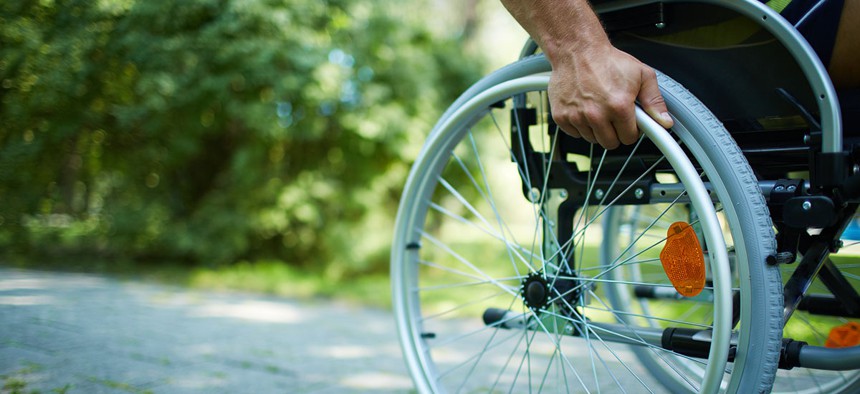First-time Wheelchair Users Could Learn to Navigate the World Through Virtual Reality

Pressmaster/Shutterstock.com
The virtual urban environment that realistically simulates the common spatial negotiation tasks that a first-time wheelchair user might encounter.
When designers at Fjord, a global design and innovation consultancy, first came together to experiment with virtual reality, they began with a question: How can an immersive experience help people build empathy to better understand unfamiliar situations?
Inspired by Jason DaSilva’s accessibility map and documentary film When I Walk, which chronicles his journey after being diagnosed with multiple sclerosis, the team used their prompt as a springboard to brainstorm solutions for wheelchair users. Numerous user research interviews later, their directive became clear: build a VR experience to help first-time wheelchair users safely learn how to navigate the world on their first day.
The Wheelchair Training Program prototype that came out of the process has two components. The first is a 3D, virtual urban environment that realistically simulates the common spatial negotiation tasks and navigation obstacles that a first-time wheelchair user might encounter, informed by data collected from interviews, forums, and online resources for accessible design. The second component is a stationary wheelchair that has free-moving wheels equipped with custom-built motion-tracking sensors.
A user sits in the wheelchair and puts on a VR headset. As he or she rotates and steers the wheels, the sensors feed the actions to the simulator to update the virtual environment in real-time. This allows the user to practice steering, gauging spatial relationships, and negotiating pedestrians and traffic flow.
The project’s designers avoided gamifying the experience in any way. “When you turn something into a game it actually does the opposite of empathy,” says John Jones, a design strategy executive at Fjord. “It trivializes the experience, and that’s not what we wanted to do.” The team focused less on rendering realistic visual details—keeping the 3D model “light, bright, and airy,” Jones says—and more on the authenticity of the experience. Now, “the basic system of being able to move around the space is there,” says Jones, but the team is continuing to refine the simulation, adding sensations like braking, ascending and descending hills, and going over bumps.
Fjord, which is owned by Accenture, the global management consulting and professional services company, hopes to partner with different clients to test out the training program’s effectiveness and eventually bring the technology to market. Thus far, Veterans Affairs, some of Fjord’s healthcare clients, and a handful of hospitals in New York have already expressed interest, says Jones. Fjord also sees opportunities for the product to help non-wheelchair users empathize with the wheelchair experience.
“We had some discussions with a cruise line about potentially using it in their design process,” Jones says, so their architects can actually experience their designs to know “what it would actually be like for a wheelchair user.”


